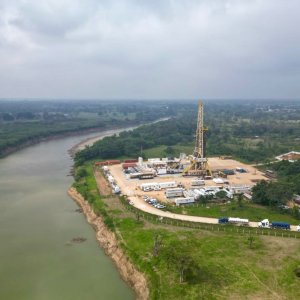
Nahua Fishermen Denounce PEMEX for Decades of Pollution
Ricardo Torres Cruz, a native Nahua community leader and fisherman from the state of Veracruz, recently traveled to Mexico City to ratify a legal complaint against PEMEX, the state-owned oil company, after denouncing the decades-long sulfur pollution of the river streams around his home in the Gulf Coast state of Veracruz. Meanwhile, the company is now dealing with the historical environmental damages that have turned the Coast into a “sacrifice zone.”
Based on Xochitlan Palmillas, Torres Cruz serves as President of the Board of Directors of the fishing and agricultural collective Sembradores de Aztapan. This is not the first time he has tried to pursue legal action against the NOC. On June 29, 2021, Torres filed the collective’s demand for the restitution and clean-up of the fishery, after complaining for several years of the increasing toxicity in the water and the multiplying dead fish on the river streams.
For years, PEMEX has raised concerns about its inability to reduce its environmental footprint. Recently, PRI Senator Sylvana Beltrones Sánchez commented that the company ranked third in the world as one of the oil corporations with the highest environmental risks. “PEMEX is lagging behind in the challenges that we face regarding environmental protection in the 21st century,” she said, in session with the Senate. The company currently owns the Texistepec Mining Unit, which is a 3,700-acre area where sulfur was extracted between 1971 and 1993 by Compañía Exploradora del Istmo. Its activities resulted in “2,888 sulfur extraction wells, three dams containing 11 million cubic meters of acidic waters, 43 hydrocarbon deposits or chapopoteras, about half a million tons of exposed coal and almost 14 miles of roads paved with acid carbon residues,” as reported by the news outlet Palabra.
The Gulf of Mexico has its own history of widely acknowledged pollution, drawing the attention of environmental experts and activists from both Mexico and the US: “[The Gulf is] the nation’s sacrifice zone and has been for 50-plus years,” said Aaron Viles, Campaign Director, Gulf Restoration Network, in an interview with The New York Times. This region is among those that have been deeply affected by historical spills of harmful chemicals, which are also common hazards to the health and general well-being of the communities affected. David Boyd, Special Rapporteur on Human Rights and the Environment, UN, said physical health issues such as cancer, heart disease, respiratory illness, strokes and reproductive health problems are all symptomatic of hazardous living experiences in sacrifice zones all over the globe, according to The Guardian.
















